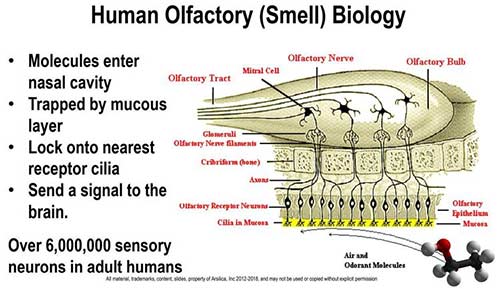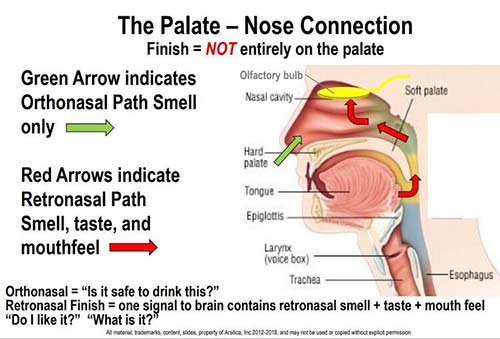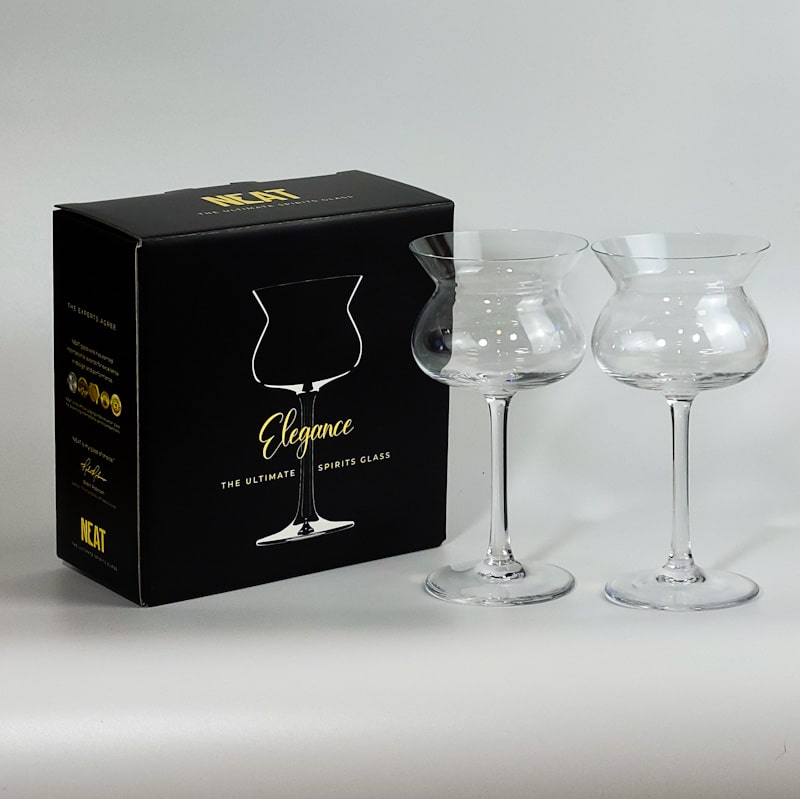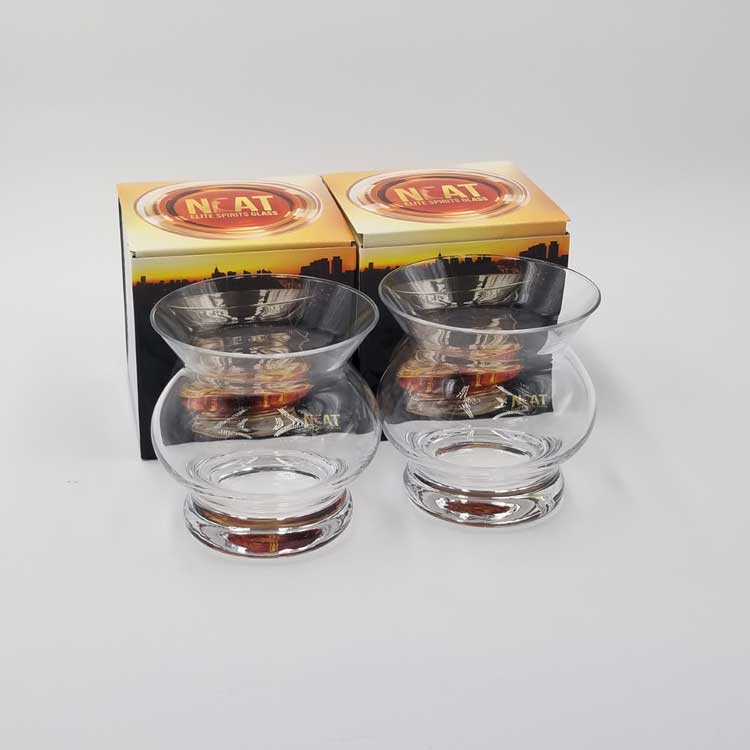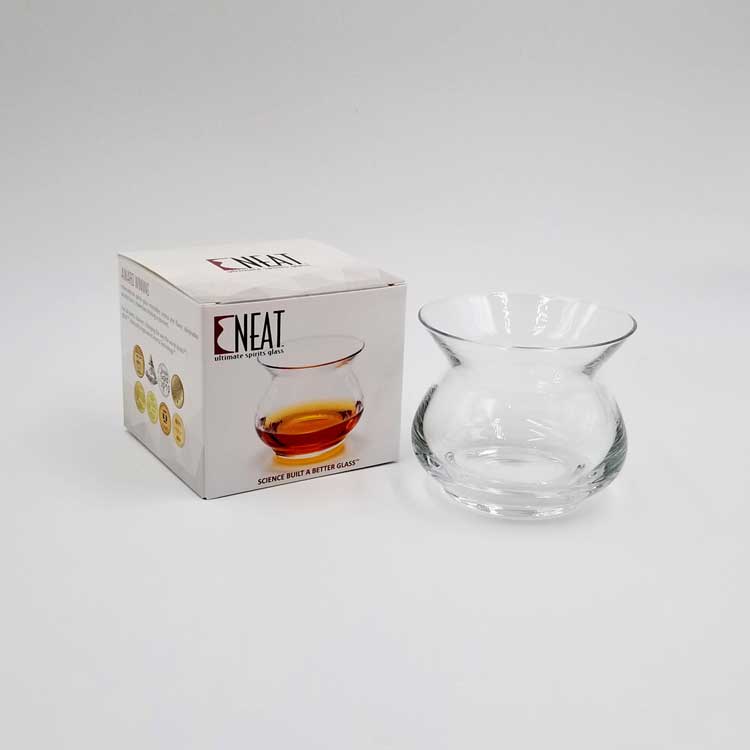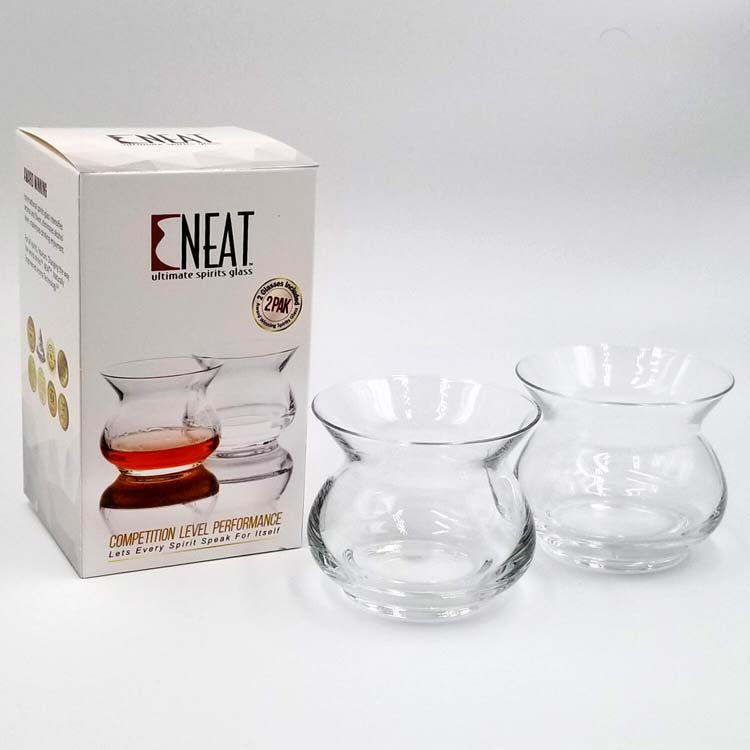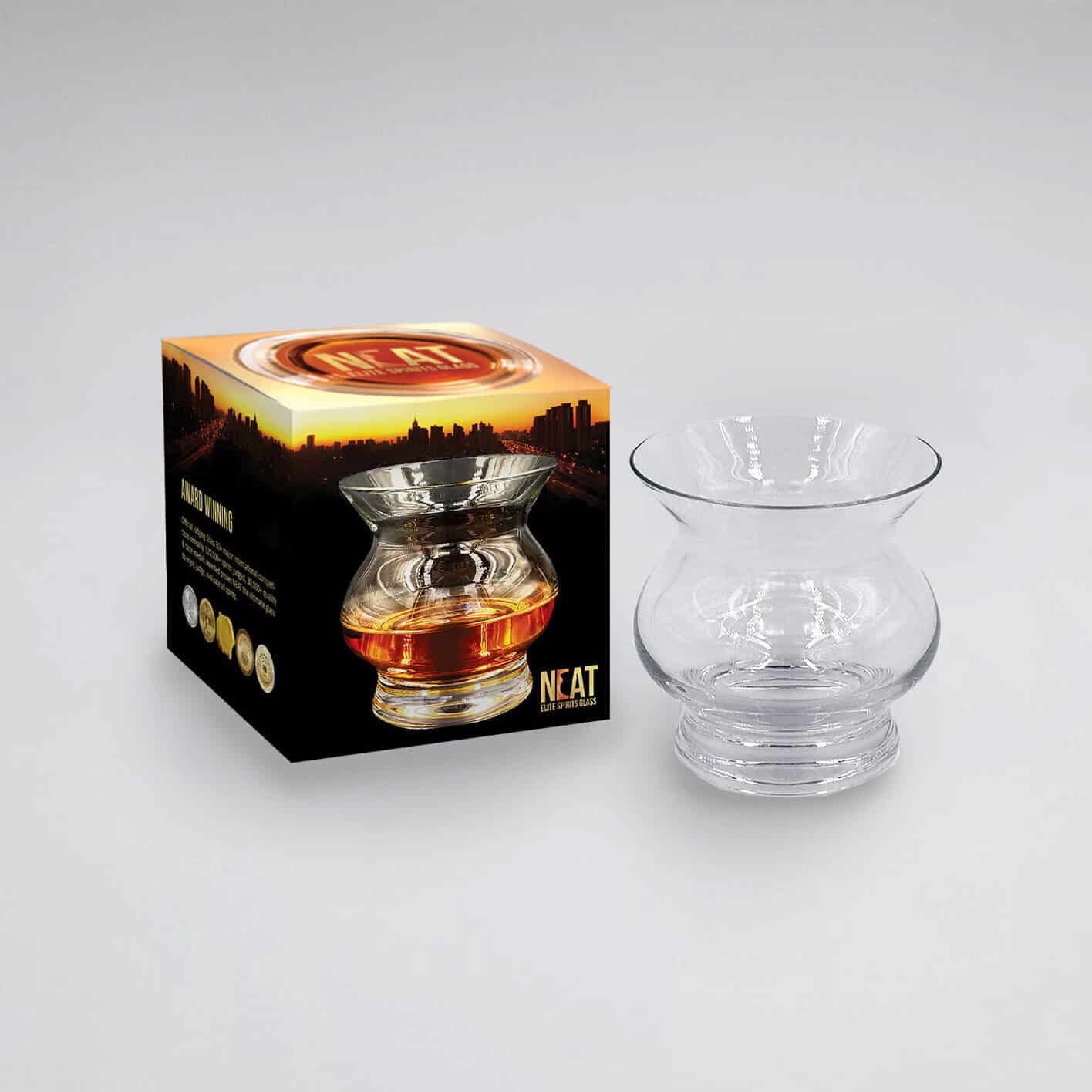
Sense of Smell – Discovering the Best Spirits Evaluation Method
Aroma: Human perception of molecules emanating from food or beverage detected by human olfactory receptors.
Flavor: The Wikipedia definition of flavor is sufficient for the scope of our discussions. Flavor is the sensory impression of food or other substances, and is determined primarily by the chemical senses of taste and smell. The “trigeminal senses”, which detect chemical irritants in the mouth and throat, as well as temperature and texture, are also important to the overall gestalt of flavor perception.
There are only five tastes: sweet, sour, salty, bitter, and umami (discussion later). There are thousands of aromas recognizable and detectable by the human sense of smell (olfactory). There are hundreds of mouthfeels. Generally accepted guidelines for the composition of Flavor:
Flavor = Aroma (90%) + Taste (5%) + Mouthfeel (5%)
Surprise, the flavor is mostly aroma, not taste. Let’s sensory sample a raspberry. Simply put, we do not taste raspberries. We smell raspberry molecules, taste sweet, and feel fuzzy, and acidic mouthfeel of the raspberry on the palate and the inside of the cheeks. Taste identifies only the sweet part of the flavor.
If we smelled the raspberry before popping it in our mouths we sampled ortho-nasal aromas which means through the nostrils to the olfactory receptors bypassing the oral cavity. Once the raspberry is chewed, flavorful beads broken, and mixed with digestive saliva, aromas find the olfactory bulb once more through the pharyngeal opening at the back of the throat These are retro-nasal aromas. Information from the nose, tongue, and chemo-sensors located all around the inside of the mouth arrive at the brain in a single packet, mostly through the trigeminal nerve for identification. If raspberries are in the brain’s memory bank, the Aha! The moment is when you recognize Raspberry. If not, the brain will automatically create a “smellibrary” reference for future access awaiting the next raspberry.
The term finish is used to designate retro-nasal aromas as well as the sensory information from taste and mouthfeel (hot, minty, metallic, acidic, oily, etc.). Finish is the whole enchilada: taste, smell, and mouthfeel from inside the oral cavity. The finish should carry more weight when evaluated. The first diagram is a cross-section of the olfactory cavity showing ortho and retropharyngeal paths. The second diagram is a section of the olfactory bulb and sensors.
Human odor detection is now known to be much more complex now than originally thought. Every person has a combination of emotion, visual perception, sounds, colors, skin feel, and awareness that accompanies every perceived flavor. Bob’s recollection of Grandma’s apple pie is very different from Susan’s; during the discussion, they are close, yet on further discussion, there are perceptive differences. We can’t control it, can’t turn sensory on or off. Everything we sense becomes inextricably associated with our experiential definition of a flavor or aroma.
Discrepancies in definitions of flavors are why professional evaluation panels must agree upon vocabulary before evaluation. This assures fresh and uniform identification names to keep panel members on the same page, thus boosting the confidence level (believability and repeatability) of the total evaluation. Bob and Susan’s separate apple pies become a uniform agreement and subtleties of personal experience can be discounted for panel consensus.
ADVICE: Listening to critics to guide wine and spirits purchases often ends in costly regret, similar to buying popular labels and chasing high ratings. Following the piper often leads to deep disappointment. You are unique, formulate your opinions; it’s all about you. Arm yourself through studied knowledge and personal perception. Achieving true satisfaction is a personal responsibility; learn, learn, learn, read, read, read, smell, smell, smell, taste, taste, taste. Learn how the best spirits glass ever was designed. Our peer-reviewed journal paper describes the science.
In the next Neat Academy we will discuss the untapped power of smell, and developing smell-ability.
